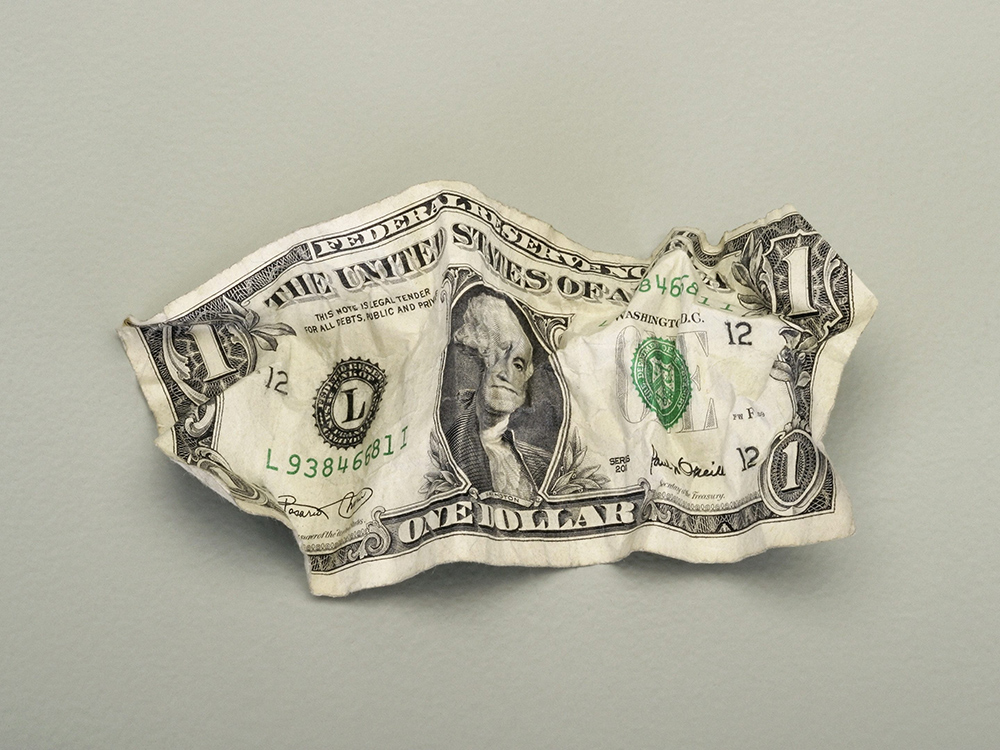
本周美元可能跌破纪录。
上周,美元录得自去年11月以来最大跌幅,令众多策略师和投资者认为全球主要储备货币美元终于迎来了转折点。如果他们的观点是对的,这将会给全球经济和金融市场带来深远的影响。
此前,由于通胀显露降温的迹象,市场加大了对美联储(Federal Reserve)很快就会停止加息的押注,导致美元汇率即将跌至一年多以来的最低水平。美元看跌者甚至把目光投向了更远的未来,称降息是不可避免的——市场普遍认为这将会发生在2024年的某个时候。
上周五,标准银行(Standard Bank)十国集团策略主管史蒂文•巴罗在一份报告中说:“我们之所以预测美元将在未来几年内走弱,其中一个原因是美联储紧缩周期将演变成宽松周期,而这即使在其他央行同时降息的情况下都会拉低美元。”
美元长期下跌可能产生的连锁反应难以估量。这将会降低发展中国家进口商品的价格,从而有利于缓解其通胀压力。过去数月,日元一直在下跌。美元走势的逆转还将提振日元等货币,并打乱与日元走弱挂钩的常用交易策略。更广泛地说,美元疲软很可能会促进美国企业的出口,但会不利于欧洲、亚洲和其他地区的企业。
彭博美元指数(Bloomberg Dollar Index)上周下降了2%,也推动了以美元计价的大宗商品(如石油和黄金)价格的上涨。
许多投资者几个月来一直在等待美元走低,此次的美元抛售潮让从M&G Investments到瑞银资产管理(UBS Asset Management)的基金经理们准备好迎接日元和新兴市场货币这类货币的优异表现。
法国巴黎资产管理公司(BNP Paribas Asset Management)的基金经理彼得•瓦萨洛表示:“最有可能的情况是,美元将在未来几个月持续疲软。”他预计澳大利亚元、新西兰元和挪威克郎将走强。
当然,投资者也可能会因过早押注导致贬值的美联储降息而蒙受损失,这早已不是什么新鲜的事。今年年初的情况就是如此,那时美元看起来正处于长期下跌的边缘,结果却逐渐趋于稳定,因为美国经济数据表明美联储不会停止加息。
看跌美元者所面临的威胁在于,这个过程可能会重演,尤其是美联储很可能会最早于本月进一步收紧货币政策。
景顺投资管理公司(Invesco Asset Management)的乔治娜•泰勒目前还不打算缩减她的美元风险敞口。她仍在密切地关注着市场数据,并且认为与通胀的战斗还没有结束。
鉴于实际收益率的绝对差值依然很高,乔治娜表示:“虽然利率差漂浮不定,但我是不会放弃美元的。”
考虑到美国的经济韧性,高盛集团的迈克尔•卡希尔预测,美元的跌幅无论如何都不可能超过以往周期。然而,如果美联储宣布结束对抗通胀,但欧洲央行被迫要在更长时间内维持高利率,美元的支撑就可能会崩溃。
高盛十国集团外汇策略师卡希尔说:“可能导致美元进一步下跌的最大风险是通胀情况出现变化。”该银行预测,到2024年,美元汇率将从现在的1欧元兑1.12美元跌至1欧元兑1.15美元,而日元汇率将从现在的1美元兑139日元涨至1美元兑125日元。
一些估值指标也为看跌美元者提供了依据。美元对日元的优势尤其明显,日元的实际有效汇率令其交易价格几乎达到几十年来的最低点。
东方汇理资产管理(Amundi Asset Management)的外汇策略主管帕雷什•乌帕德亚雅表示:“从估值角度来看,美元仍被严重高估。我认为市场将开始淡化这种情绪。”
他指出美国的双重赤字(贸易和预算赤字)是结构性阻力。但他也想到了市场观察人士经常提及的另一种现象:美元微笑理论。
该理论认为,当美国陷入严重衰退或强劲扩张时,美元往往会走强,而在温和增长时期美元则会趋于疲软。
乌帕德亚雅说:“如果美国计划实现软着陆,这可能是美元走弱最佳的依据。”(财富中文网)
——努尔•阿勒•阿里(Nour Al Ali)协助编撰。
译者:中慧言-刘嘉欢
本周美元可能跌破纪录。
上周,美元录得自去年11月以来最大跌幅,令众多策略师和投资者认为全球主要储备货币美元终于迎来了转折点。如果他们的观点是对的,这将会给全球经济和金融市场带来深远的影响。
此前,由于通胀显露降温的迹象,市场加大了对美联储(Federal Reserve)很快就会停止加息的押注,导致美元汇率即将跌至一年多以来的最低水平。美元看跌者甚至把目光投向了更远的未来,称降息是不可避免的——市场普遍认为这将会发生在2024年的某个时候。
上周五,标准银行(Standard Bank)十国集团策略主管史蒂文•巴罗在一份报告中说:“我们之所以预测美元将在未来几年内走弱,其中一个原因是美联储紧缩周期将演变成宽松周期,而这即使在其他央行同时降息的情况下都会拉低美元。”
美元长期下跌可能产生的连锁反应难以估量。这将会降低发展中国家进口商品的价格,从而有利于缓解其通胀压力。过去数月,日元一直在下跌。美元走势的逆转还将提振日元等货币,并打乱与日元走弱挂钩的常用交易策略。更广泛地说,美元疲软很可能会促进美国企业的出口,但会不利于欧洲、亚洲和其他地区的企业。
彭博美元指数(Bloomberg Dollar Index)上周下降了2%,也推动了以美元计价的大宗商品(如石油和黄金)价格的上涨。
许多投资者几个月来一直在等待美元走低,此次的美元抛售潮让从M&G Investments到瑞银资产管理(UBS Asset Management)的基金经理们准备好迎接日元和新兴市场货币这类货币的优异表现。
法国巴黎资产管理公司(BNP Paribas Asset Management)的基金经理彼得•瓦萨洛表示:“最有可能的情况是,美元将在未来几个月持续疲软。”他预计澳大利亚元、新西兰元和挪威克郎将走强。
当然,投资者也可能会因过早押注导致贬值的美联储降息而蒙受损失,这早已不是什么新鲜的事。今年年初的情况就是如此,那时美元看起来正处于长期下跌的边缘,结果却逐渐趋于稳定,因为美国经济数据表明美联储不会停止加息。
看跌美元者所面临的威胁在于,这个过程可能会重演,尤其是美联储很可能会最早于本月进一步收紧货币政策。
景顺投资管理公司(Invesco Asset Management)的乔治娜•泰勒目前还不打算缩减她的美元风险敞口。她仍在密切地关注着市场数据,并且认为与通胀的战斗还没有结束。
鉴于实际收益率的绝对差值依然很高,乔治娜表示:“虽然利率差漂浮不定,但我是不会放弃美元的。”
考虑到美国的经济韧性,高盛集团的迈克尔•卡希尔预测,美元的跌幅无论如何都不可能超过以往周期。然而,如果美联储宣布结束对抗通胀,但欧洲央行被迫要在更长时间内维持高利率,美元的支撑就可能会崩溃。
高盛十国集团外汇策略师卡希尔说:“可能导致美元进一步下跌的最大风险是通胀情况出现变化。”该银行预测,到2024年,美元汇率将从现在的1欧元兑1.12美元跌至1欧元兑1.15美元,而日元汇率将从现在的1美元兑139日元涨至1美元兑125日元。
一些估值指标也为看跌美元者提供了依据。美元对日元的优势尤其明显,日元的实际有效汇率令其交易价格几乎达到几十年来的最低点。
东方汇理资产管理(Amundi Asset Management)的外汇策略主管帕雷什•乌帕德亚雅表示:“从估值角度来看,美元仍被严重高估。我认为市场将开始淡化这种情绪。”
他指出美国的双重赤字(贸易和预算赤字)是结构性阻力。但他也想到了市场观察人士经常提及的另一种现象:美元微笑理论。
该理论认为,当美国陷入严重衰退或强劲扩张时,美元往往会走强,而在温和增长时期美元则会趋于疲软。
乌帕德亚雅说:“如果美国计划实现软着陆,这可能是美元走弱最佳的依据。”(财富中文网)
——努尔•阿勒•阿里(Nour Al Ali)协助编撰。
译者:中慧言-刘嘉欢
It just may have been the week that broke the dollar.
The greenback’s worst slump since November has a bevy of strategists and investors saying a turning point is finally at hand for the world’s primary reserve currency. If they’re right, there will be far-reaching consequences for global economies and financial markets.
The US currency is teetering at the lowest level in more than a year after signs of cooling inflation bolstered bets that the Federal Reserve will soon stop hiking interest rates. Dollar bears are looking even further ahead, to what they say are inevitable rate cuts, something the market consensus sees happening at some point in 2024.
“Our call for the dollar to enter a multi-year downtrend is partly based on the fact that the Fed’s tightening cycle will morph into an easing cycle, and this will pull the dollar down even as other central banks cut as well,” Steven Barrow, head of G-10 strategy at Standard Bank, said in a note on Friday.
It’s hard to overstate the potential ripple effects from a long-term greenback slide. It would reduce import prices for developing nations, helping ease their inflation pressures. A greenback reversal also stands to bolster currencies like the yen, which has been tumbling for months, and upend popular trading strategies tied to a weaker yen. More broadly, a softer US currency would tend to boost American firms’ exports at the expense of their counterparts in Europe, Asia and elsewhere.
The Bloomberg dollar index’s 2% decline last week also contributed to gains in greenback-priced commodities such as oil and gold.
Many investors have been waiting for a downtrend in the dollar for months and the selloff has fund managers from M&G Investments to UBS Asset Management bracing for an outperformance in the likes of the yen and emerging-market currencies.
“The most likely path forward is the dollar remains weak throughout the coming months,” said Peter Vassallo, a fund manager at BNP Paribas Asset Management. He’s betting on gains for the Australian dollar, New Zealand dollar and Norwegian krone.
Of course, there’s a long history of investors getting burned by premature bets on Fed rate cuts that would sink the dollar. That was the case early this year, when the currency seemed to be on the verge of a protracted downtrend only to stabilize as US economic data drove home that the Fed wasn’t about to stop hiking.
For the bears, the threat is that dynamic repeats itself, especially with the Fed likely to tighten further as soon as this month.
At Invesco Asset Management, Georgina Taylor isn’t prepared to reduce her dollar exposure just yet. Still firmly in data-watching mode, she’s not ready to conclude the battle to tame inflation is over.
“The interest-rate differential story is wavering but I wouldn’t give up on the dollar,” she said, given that the absolute difference in real yields remains high.
US economic resilience is the reason Michael Cahill at Goldman Sachs Group Inc. expects any dollar downturn will likely be shallower than in past cycles. Dollar support could crumble, however, if the Fed calls an end to its inflation fight even as the European Central Bank is compelled to keep rates higher for longer.
“The biggest risk that could lead to more dollar downside is that the inflation picture diverges,” said Cahill, a G-10 FX strategist. The bank forecasts the dollar will weaken to $1.15 per euro in 2024, from about $1.12 now, and that the yen will strengthen to 125 per dollar, from roughly 139 now.
Dollar bears can also lean on valuation measures. The currency’s strength has been particularly pronounced against the yen, to the point where the real effective exchange rate has Japan’s currency trading near its lowest level in decades.
“From a valuation perspective, the dollar is still very overvalued,” said Paresh Upadhyaya, director of currency strategy at Amundi Asset Management. “I think markets are going to start to fade that.”
He points to the US’s twin deficits — its trade and budgetary shortfalls — as structural headwinds. But he also has in mind another dynamic that market watchers often cite, the dollar smile theory.
The thinking there is that the greenback typically gains when the US is either in a severe slump or a robust expansion — and falters in times of moderate growth.
“If the US engineers a soft landing, that is probably the best case for a weaker dollar you can ask for,” Upadhyaya said.
–With assistance from Nour Al Ali.






